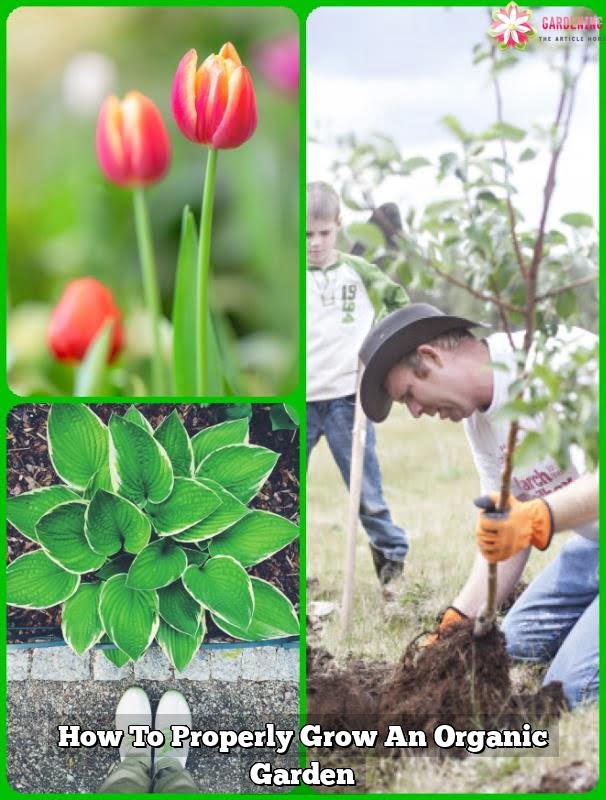Are you wondering how to properly decorate a cake to create a visually stunning and delicious dessert? Cake decoration is an essential aspect of the baking process, as it not only enhances the appearance of the cake but also adds to its overall flavor and texture. In this article, we will discuss the significance of cake decoration and provide valuable tips and techniques for mastering the art of decorating cakes.
When it comes to decorating a cake, having the right tools and ingredients is crucial. From frosting and piping bags to various decorating tips, understanding the basic items needed for cake decoration is essential for success. We will delve into the basic tools and ingredients required for creating beautifully decorated cakes.
In addition to discussing essential tools and ingredients, we will also provide step-by-step instructions on how to properly prepare the cake for decorating. This includes leveling, filling, and crumb coating, which are all important steps in ensuring a smooth and professional finish to your decorated cake. So let’s dive into the world of cake decoration and discover how you can take your baking skills to the next level.
Basic Tools and Ingredients for Cake Decoration
When it comes to decorating a cake, having the right tools and ingredients is essential in achieving a beautiful and delicious result. The basic items needed for cake decoration include frosting, piping bags, decorating tips, and various other supplies that can help bring your cake design to life.
One of the most important aspects of cake decoration is using quality ingredients that will not only enhance the flavor of the cake but also provide a smooth and workable canvas for your designs.
Frosting is a key component in cake decoration, as it serves as both the adhesive for decorative elements and the finishing touch that adds flavor and visual appeal. Whether you choose buttercream, fondant, or royal icing, the type of frosting you use will greatly affect how your cake turns out.
Additionally, investing in different types of piping tips will allow you to create various textures and designs on your cake. From simple borders to intricate flowers, having an assortment of decorating tips will give you more options for expressing your creativity.
In addition to frosting and piping tools, other supplies such as offset spatulas for smoothing icing, fondant tools for sculpting edible designs, and food coloring for adding vibrant hues are essential for creating stunning cake decorations. By utilizing the right tools and high-quality ingredients, you can elevate your cakes from ordinary to extraordinary. Learning how to properly decorate a cake involves understanding not only the techniques but also having the necessary equipment at your disposal.
| Basic Tools | Ingredients |
|---|---|
| Frosting | Buttercream |
| Piping bags | Fondant |
| Decorating tips | Royal icing |
| Offset spatula | Food coloring |
Preparing the Cake for Decoration
After choosing the right frosting and icing techniques for your cake, the next crucial step in properly decorating a cake is preparing the cake itself. The way in which you prepare the cake can greatly impact the final result, so it’s essential to follow proper steps to ensure a smooth and visually appealing outcome.
First and foremost, it’s important to level the cake layers to create a flat surface for decorating. Using a long serrated knife or a cake leveler, carefully trim off any domed tops or uneven edges from each layer. This will not only provide a stable base for stacking but also make it easier to achieve clean and straight lines when applying frosting.
Next, consider filling your cake layers with complementary flavors such as fruit preserves, flavored buttercream, or ganache. Spread an even layer of filling on top of each trimmed cake layer without allowing it to overflow over the edges. This step adds moisture and flavor to the cake while also contributing to the overall aesthetic when sliced.
Once the layers are leveled and filled, it’s time to apply a crumb coat. A crumb coat is a thin layer of frosting that seals in any loose crumbs on the surface of the cake, preventing them from ruining the final presentation. Spread a thin layer of frosting over the entire outside of the cake and chill it in the refrigerator until firm before moving on with adding additional layers of frosting or decorative elements.
Taking these preparatory steps ensures that your cakes are ready for decorating and will ultimately result in a professional-looking finished product that is both visually stunning and deliciously moist. Mastering how to properly decorate a cake includes paying attention to these initial steps in order to achieve impressive results.
Choosing the Right Frosting and Icing Techniques
Types of Frosting and Icing
When it comes to decorating a cake, choosing the right frosting and icing is crucial. There are several options to consider, including buttercream, fondant, royal icing, and ganache. Each type of frosting or icing has its own unique texture, flavor, and application method.
Buttercream is a popular choice for its creamy texture and versatility, while fondant provides a smooth and polished finish. Royal icing is ideal for intricate designs and decorations, while ganache offers a rich and glossy appearance. Understanding the characteristics of each option will help you make an informed decision for your cake decoration project.
Best Techniques for Applying Frosting and Icing
Once you have chosen the right type of frosting or icing for your cake, it’s important to master the proper techniques for applying them. For buttercream frosting, using an offset spatula to spread it evenly over the cake is key to achieving a smooth surface. When working with fondant, rolling it out to the appropriate thickness and carefully draping it over the cake will help prevent air bubbles and creases.
Royal icing can be piped onto the cake using different tips to create intricate designs, while ganache can be poured over the cake for a luscious finish. Understanding these techniques will ensure that your frosting or icing is applied flawlessly.
Adding Flavor and Texture
In addition to choosing the right type of frosting or icing and mastering application techniques, adding flavor and texture can take your cake decoration skills to the next level. Experimenting with different flavor extracts or natural ingredients like fruit purees can enhance the taste of your frosting or icing.
You can also play with texture by incorporating edible decorations like sprinkles, nuts, or edible flowers into your design. These elements not only add visual interest but also contribute to a delightful eating experience for anyone enjoying your beautifully decorated cake.
By understanding the different types of frosting and icing available, mastering application techniques, and experimenting with flavor and texture variations in your decorations, you can elevate your cake decorating skills and create stunningly beautiful desserts that are as delicious as they are visually appealing. Mastering how to properly decorate a cake takes time – but with practice comes perfection.
Understanding Color and Texture in Cake Decoration
When it comes to cake decoration, understanding color and texture is essential for creating visually stunning designs. The use of colors can evoke certain moods or themes, while different textures can add depth and interest to the overall look of the cake. In this section, we will explore how to use color and texture effectively in cake decoration to create beautiful and eye-catching designs.
Color plays a crucial role in cake decoration as it can set the tone for the entire design. By using a carefully selected color palette, you can create a cohesive and visually appealing cake that will impress your guests. Consider the theme or occasion for the cake when choosing colors, and don’t be afraid to experiment with different shades to achieve the perfect look.
In addition to color, understanding how to incorporate texture into your cake decoration can take your design to the next level. Texture adds dimension and visual interest to the cake, making it more dynamic and engaging. Whether it’s using different frosting techniques, incorporating edible decorations, or adding layers for contrast, paying attention to texture will elevate your cake decorating skills.
| Concept | Example |
|---|---|
| Color Palette | For a spring-themed cake, use pastel shades like pink, yellow, and mint green |
| Texture Techniques | Create a rustic textured look with buttercream swirls or add smooth fondant accents for contrast |
Creative Decorating Techniques
When it comes to decorating a cake, there are numerous creative techniques that can take your dessert from ordinary to extraordinary. Whether you’re a beginner or an experienced baker, exploring these creative methods can add a unique and personalized touch to your cakes. Here are some creative decorating techniques to consider:
- Piping: One of the most traditional and versatile cake decorating techniques is piping. Using a piping bag and various decorating tips, you can create intricate designs, borders, and even written messages on your cake.
- Fondant Sculpting: Fondant is a popular choice for creating elaborate cake decorations. From sculpting figurines to crafting detailed flowers and patterns, fondant offers endless possibilities for artistic expression.
- Edible Decorations: Adding edible decorations such as fresh fruit, chocolate shavings, or edible flowers can elevate the visual appeal of your cake. These decorative elements not only look delightful but also provide added flavor and texture to the dessert.
These creative decorating techniques require practice and patience to master, but they can significantly enhance the overall look of your cake. Experiment with different methods and let your imagination run wild to discover unique ways to decorate your cakes.
Understanding how to properly decorate a cake involves not only mastering the technical aspects of decorating but also allowing yourself the freedom to explore different artistic expressions. Keep in mind that creativity knows no bounds when it comes to cake decoration.
Remember that practice makes perfect when it comes to mastering these creative techniques. Don’t be afraid to try new things and experiment with different ideas until you find the perfect decorative style for your cakes. With dedication and passion, you can hone your skills and create stunning works of edible art that will impress everyone who lays eyes on them.
Troubleshooting and Common Mistakes in Cake Decoration
Common Issues in Cake Decoration
When it comes to decorating a cake, there are some common issues that can arise during the process. One of the most frequent problems is air bubbles in the frosting, which can result in an uneven and bumpy appearance on the cake.
Another issue is icing that is too runny or too stiff, making it difficult to achieve smooth and even coverage on the cake’s surface. Additionally, inconsistent piping or spreading of frosting can lead to a messy and unprofessional-looking design.
Tips for Avoiding Mistakes
To ensure a successful cake decoration process, there are several tips for avoiding common mistakes. When applying frosting, it’s important to start with a crumb coat to seal in any loose crumbs and create a smooth base for the final layer of frosting.
Using the right consistency of frosting, whether it’s buttercream, fondant, or ganache, is also crucial for achieving a professional finish. Properly preparing the cake by leveling its surface and filling any gaps will help prevent lopsided or uneven decorations.
Dealing With Unexpected Challenges
Despite careful preparation and execution, unexpected challenges may still occur during cake decoration. If the frosting starts to melt or lose its shape due to warm temperatures, placing the cake in the refrigerator for a short time can help firm up the icing.
In situations where an error has been made in piping or applying decorations, quick thinking and improvisation can often salvage the design. It’s important not to get discouraged by mistakes, as they can be valuable learning experiences for improving one’s cake decorating skills.
Finishing Touches and Presentation
Decorating a cake is not just about making it visually appealing, but also about creating a delicious dessert that will leave a lasting impression on your guests. Once you have applied all the necessary techniques and creative elements to your cake, it’s time to focus on the finishing touches and presentation. Here are some tips on how to add those final flourishes to your masterpiece:
1. Adding decorative borders: Use frosting, edible pearls, or chocolate curls to create a beautiful border around the base and top edges of the cake. This adds a polished look to the overall appearance of the cake.
2. Utilizing fresh fruits or flowers: Fresh fruits like berries or sliced fruits can be used as a colorful and refreshing garnish for cakes. Similarly, edible flowers can be used to add an elegant and natural touch to the cake’s design.
3. Presentation on a decorative stand: Placing your decorated cake on a decorative cake stand can elevate its visual appeal. Choose a stand that complements the theme and design of your cake for an added wow factor.
4. Personalized touches: Consider adding personalized touches to your cake such as edible images or monogrammed fondant cutouts. This will give your creation a unique and thoughtful touch.
By paying attention to these final details in decorating your cake, you can elevate its overall appearance and make it even more enticing. Remember that presentation is just as important as taste when it comes to creating stunning desserts that will impress your guests at any event or celebration.
Conclusion
In conclusion, mastering the art of cake decoration is a valuable skill that can elevate the visual appeal and deliciousness of any dessert. Throughout this article, we have delved into the significance of cake decoration, explored the essential tools and ingredients needed for decorating a cake, and provided step-by-step instructions on how to properly prepare, frost, and decorate a cake.
By understanding the importance of color and texture in cake decoration, as well as exploring creative decorating techniques, anyone can create visually stunning and delectable cakes.
Learning how to properly decorate a cake not only enhances the overall aesthetic appeal but also adds a personal touch to any celebration. Whether it’s for a birthday, wedding, or other special occasion, a beautifully decorated cake becomes the centerpiece of the event. With knowledge of different frosting and icing techniques, along with troubleshooting common mistakes in cake decoration, individuals can feel confident in their abilities to create professional-looking cakes at home.
Ultimately, mastering the art of cake decoration takes practice, patience, and creativity. Experimenting with various decorating techniques and embracing creativity will allow individuals to develop their own unique style. With proper preparation and attention to detail in finishing touches and presentation, anyone can take pride in creating beautiful and delicious desserts that will be appreciated by friends and family alike. So go ahead, grab your piping bags and fondant tools – it’s time to showcase your skills in cake decoration.
Frequently Asked Questions
What Is the Best Way to Decorate a Cake?
The best way to decorate a cake is to start with a smooth, even layer of frosting and then use piping bags and tips to create intricate designs. Adding edible flowers, fruits, or even fondant decorations can also enhance the overall look of the cake.
What Is the Technique in Decorating a Cake?
The technique in decorating a cake involves using various tools like offset spatulas, pastry bags, and icing tips to apply frosting in different patterns and designs. It’s important to have a steady hand and practice good spacing and symmetry when creating your decorations.
What Are the Best Tips for Cake Decorating?
Some of the best tips for cake decorating include ensuring that your cake is completely cooled before applying any frosting, using a turntable for smooth and even application of frosting, and allowing layers of frosting to set before adding additional details. It’s also helpful to watch tutorials and practice different techniques to improve your skills.

Welcome to my blog about home and family. This blog is a place where I will share my thoughts, ideas, and experiences related to these important topics. I am a stay-at-home mom with two young children. I hope you enjoy reading it! and may find some helpful tips and ideas that will make your home and family life even better!





